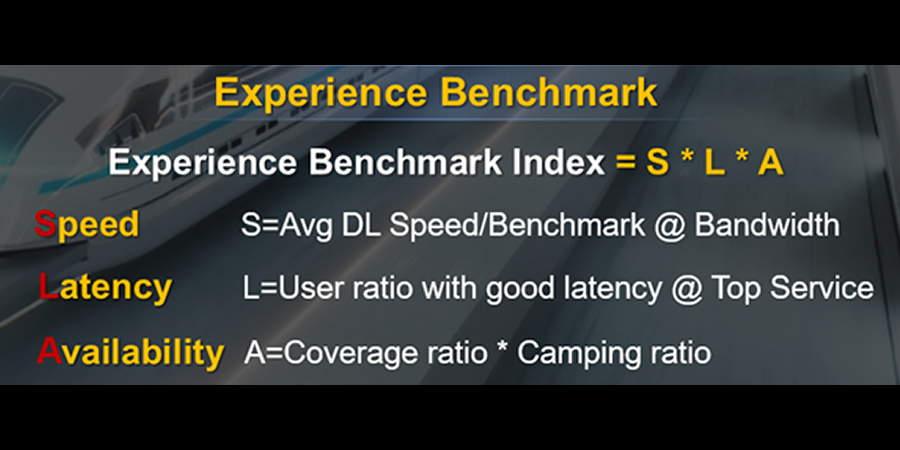The 5G S.L.A user experience benchmark includes three main indexes, Speed, Latency, and Availability
Aiming to provide a comprehensive evaluation of 5G services for users across the Middle East, Huawei has proposed a new ‘5G Experience Benchmark.’ The significance of this benchmark complements the rapid commercialization of 5G technology across the region. The benchmark aims to enable telecom operators to focus on improving 5G user experiences, make precise investments, and improve ROI.
In the GCC, the number of 5G users in the Middle East is estimated to increase from 0.7 million to 3.1 million, realizing around 350% growth. On some networks in Kuwait and Saudi Arabia, the 5G traffic ratio has already exceeded 30%.
Globally, 5G has enabled diversified emerging services from imagination to reality. Taking China and South Korea as examples, VR/AR, 4K, multi-view video, and cloud gaming have brought enhanced digital experiences to many. On the other hand, it also brings 5G user experience issues to the surface. 5G users have higher expectations for 5G, as well as higher requirements for the network experience.
According to the experience of the world's 5G pioneer market, 5G users are mainly sensitive to the network rate, real-time experience, and 5G service availability. In the GCC, the insight also shows that although 5G has been deployed on a large scale, there are many opportunities to enhance user experience with better speed and less latency, especially for gaming and video users. This requires the industry to build a unified benchmark to evaluate comprehensive 5G experiences, again enabling operators to focus on the user experience, make precise investments, and improve ROI.
Huawei proposed the 5G experience benchmark by an S.L.A. model, which considers factors including 5G spectrum bandwidth, download rate, E2E latency, and coverage, to comprehensively evaluate the 5G user experience. The 5G S.L.A user experience benchmark includes three main indexes, Speed, Latency, and Availability, and the overall index is calculated by S*L*A.
S indicates the speed. The average downlink rate of 5G UEs is measured and divided by the benchmark value according to different bandwidths to obtain an index score. This index will support operators to evaluate its speed quality who has different spectrum bandwidth.
L indicates latency. The top 5G applications are measured and calculate the good latency ratio to obtain an index score. This index will support operators to evaluate E2E latency quality for their top applications.
A indicates the availability of 5G network. The 5G availability score is obtained by identifying the current network population coverage and multiplying the 5G network camping ratio. This index will support operators to evaluate its 5G availability for end-users in a combination of 5G covered areas and non-covered areas.
The score obtained by multiplying the three indexes is the final network experience benchmark value.
The 5G experience benchmark is a multi-dimensional comprehensive measurement model. For the specific measurement method and detailed scoring mechanism, it is suggested that regulatory authorities and operators should discuss and cooperate to further clarify the quantification. For example, top services on an operator's network are different. Based on different services, entities need to perform modeling based on a large number of live network samples or lab test data.
Also, the baseline values corresponding to good user experiences, such as the rate and latency, are provided to help measure and score the network experience gap and identify the operator network construction direction. Huawei hopes that regulatory agencies and operators can reach a consensus on the availability of rate and latency, use these dimensions as the criteria for measuring their networks, and then perform detailed measurement and analysis based on their networks.
The analysis of their networks will allow operators to identify the experience problems and gaps to make precise investments to improve the user experience and accelerate digital economic growth.










